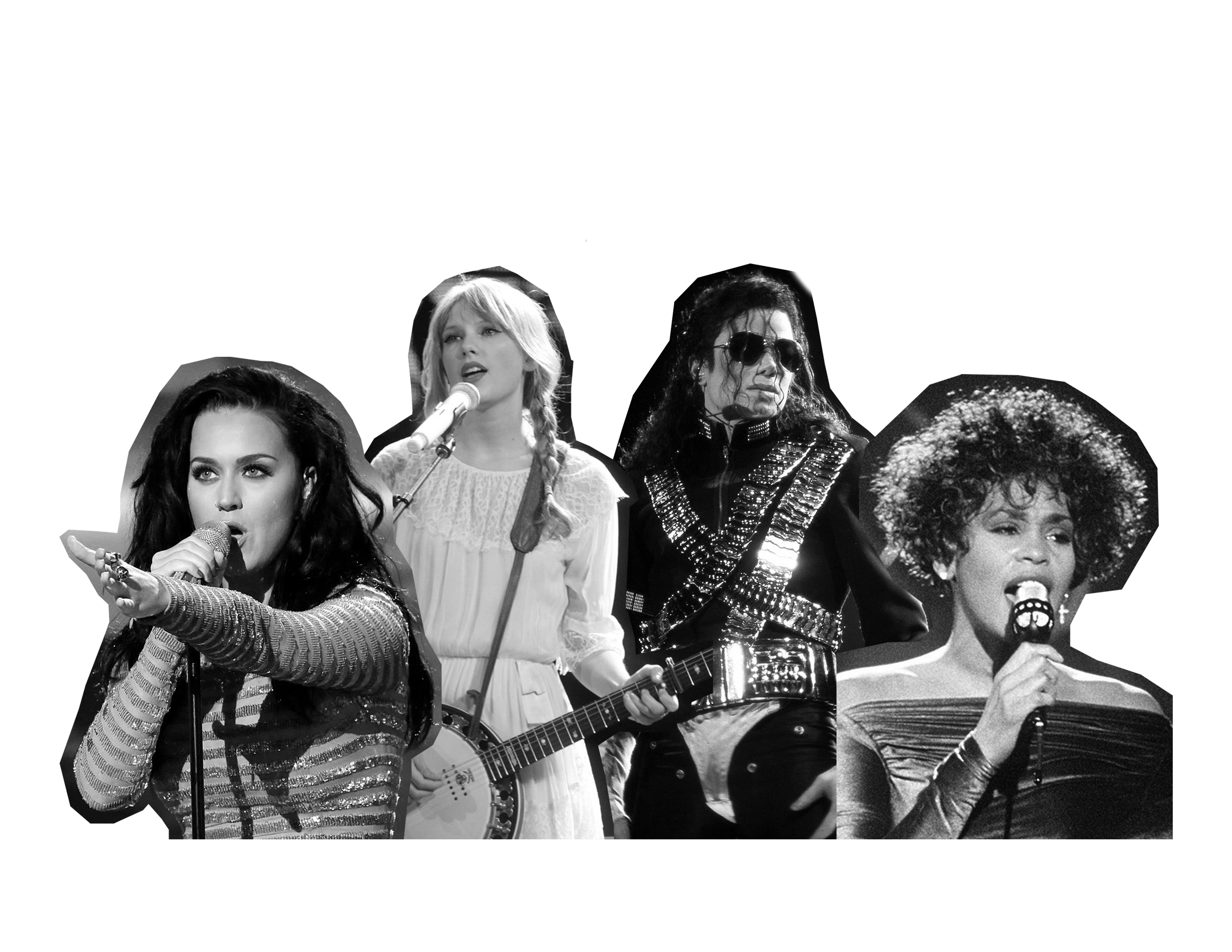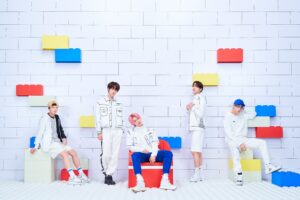Glee, for all its many flaws, boasts one of the most extensive musical catalogs in television history. Since its debut in 2009, Glee quickly built a reputation for doing it all musically, from covering iconic pop ballads and gritty rock classics to songs straight out of memes.
While many of the show’s choices were questionable at best, Glee’s reputation as a musical titan holds strong, with a record 207 songs charting on the Hot 100. Throughout its six-season run, this staple of early 2010s pop culture produced some extraordinary musical arrangements—many of which, we wager, perhaps blasphemously, were better than the original.
“How Will I Know” by Whitney Houston
Season 3, Episode 17: “Dance With Somebody”
Saying Whitney can be done better than Whitney herself feels sacrilegious (and it is). But this stripped-down cover of “How Will I Know”—a rendition of Houston’s lesser-known a cappella mix—is sublime because it’s sung by four distinct vocal tenors, rewriting the song in a new communal image. The original blazes so bright—yearning with an orange desire—but Glee’s version delves into thicker emotional water. “How Will I Know” opens Glee’s Whitney tribute episode—a musical peak for a show known to get heavy-handed with its tributes. The context lets it take on a new melancholic density, its doubt no longer about a crush on a boy, but also about what our collective future looks like without our heroes to follow after. When a simple drum kicks in during the last 30 seconds, their mourning feels almost spiritual—or at least special.
—Max Zhang
“Teenage Dream” by Katy Perry
Season 2, Episode 6: “Never Been Kissed”
“Never Been Kissed” has long been heralded as one of Glee’s most iconic episodes, and for good reason. In it, we are introduced to Blaine Anderson (Darren Criss), whose grand entrance into the show is now a fan-favorite a cappella rendition of “Teenage Dream.” While Criss’ smooth vocals are certainly the song’s focal point, so much of what makes this cover great is the background vocals, arranged and performed by The Beelzebubs, a real a cappella group at Tufts University. The group had performed an early rendition of “Teenage Dream” shortly after the song’s release, and was subsequently approached by Glee producers to arrange and sing the track for the show. Perhaps it was the musical charm of a genuine all-male a capella group behind the Dalton Academy Warblers that allowed “Teenage Dream” to be the first Glee cover to hit #1 on the Billboard charts. Regardless, this performance quickly launched the Warblers into the hearts of Gleeks, and by the final note of the song, it’s hard not to resonate with Kurt’s crush on Blaine.
—Sarah Craig
“Let’s Have a Kiki/Turkey Lurkey Time”
Season 4, Episode 8: “Thanksgiving”
Pure unfiltered absurdity ensues as Sarah Jessica Parker, playing a top executive at Vogue, spends her Thanksgiving throwing a party with two college freshmen in their warehouse apartment. Pairing the Scissor Sisters’ house anthem “Let’s Have a Kiki” with the sing-songy holiday tune “Turkey Lurkey Time” was a bold choice—and yet, it stands the test of time as one of the greatest holiday medleys of the 21st century. The track serves as the background for a gathering of queer folks who chose to spend their holiday dancing with their chosen family (and two theater kids from Ohio). It’s one of the many deliciously campy moments that could only come from this strange and fascinating show.
—Francesca Theofilou
“Smooth Criminal” by Michael Jackson
Season 3, Episode 11: “Michael”
Though his stint on Glee was short and sweet, Grant Gustin made a lasting impression in his portrayal of head Warbler Sebastian Smythe in season three. His one-liners and quippy comebacks rivaled Santana’s legendary smackdowns, and in their duet of “Smooth Criminal,” he held his own vocally. Gustin demonstrates a surprising vocal power and stage presence that makes him an equal contributor to Rivera’s impressive performance. Backed solely by Croatian cellist duo 2CELLOS as the pair chase each other around a room full of chairs, they rely solely on their voices to deliver a show so entrancing, it’s impossible to look away. Of course, the stakes are heightened as the Warblers and New Directions are set to be competitors for Regionals, which only makes this duet/showdown even more deliciously entertaining. The intensity of the performance is palpable even through the screen, and sweat practically beads on your forehead just watching it.
—Maya Kominsky
“Mine” by Taylor Swift
Season 4, Episode 4: “The Break-Up”
From fan favorite background antagonists to fleshed out main cast members, Brittany (Heather Morris) and Santana (Naya Rivera) undergo tremendous growth—cementing themselves as a major staple of the Glee experience. A core part of their legacy is their relationship with one another. Santana’s heartbreaking rendition of Taylor Swift’s “Mine” comes as the two make the difficult decision to split when Santana leaves for college. Swift’s “Mine” already stands as a very sweet and melancholic tune, but Rivera’s raw and more powerful vocals add pure emotion to the track, perfectly conveying the hurt the pair are feeling. The cover’s slower tempo, paired with much softer instrumentals, further amps up the tender and intimate nature of the scene. We’re left vulnerable to a vicarious pain felt deeply in the moment, but also the great love that led the two to this difficult decision.
—Ajani Jones
“Love Shack” by The B-52’s
Season 3, Episode 13: “Heart”
Season three is stacked with some incredible covers, some of its strongest being group numbers. Among multiple Michael Jackson ensemble covers and New Directions’ winning performance at Nationals sits “Love Shack,” the closing number of the third season’s Valentine’s Day-themed episode. This cover is fun. It provides a wholly joyful reprieve from the many romantic serenades that characterize the episode. Just before the drums (and cowbell!) kick in, Blaine dedicates the song to “all of the lovers in the room,” and then the entire “shack” (Sugar Motta’s Sugar Shack, in this case) is turned into a dance party. Mercedes (Amber Riley), Rachel (Lea Michele), and Brittany’s background harmonies join vocal support from all of New Directions, with Mercedes closing out the song with expert belts and runs. Her vocal talent rounds out this cover, showcasing that it is not only fun, but musically impressive as well.
—Sarah Craig
“Gloria” by Laura Branigan
Season 5, Episode 10: “Trio”
Season five is, arguably, the dumpster fire of Glee seasons. With McKinley disappearing into the distance in the back half of the season, the plot goes completely off-the-rails as Rachel cycles from living her dream (performing in Funny Girl) to suddenly quitting for some zany TV pilot that was never going to work. But at the halfway mark in the season, a gem emerges in the form of this reimagination of one-hit-wonder Laura Branigan’s one-hit: here comes “Gloria.” At this point, Rachel and Santana are vying for the favoritism of Elliott (Adam Lambert), and it makes “Gloria” a true vocal showcase. Branigan, to be fair, can really sing, as “Gloria” had to climb to #2 on the Billboard 100 competing against Joan Jett and Survivor in 1982. But there’s a sweet theatricality to the Glee version that better matches a borderline campy song that’s trying to get to the bottom of why a woman lacks the suitors she’s supposed to have. And it’s always a bonus to hear Naya Rivera ad-libbing her ass off, all these years later.
—Max Zhang
“Toxic” by Britney Spears
Season 5, Episode 12: “100”
Britney Spears’s “Toxic” is just a small part of the musician’s extensive and iconic musical repertoire. The song is a sensual and upbeat anthem, a musical avenue that Glee has never shied away from. While the show’s controversial first cover of “Toxic” leaned into the upbeat nature of the song, forcing an inorganic and unoriginal “sexiness,” the cast’s second attempt takes a much slower approach, a musical choice that really works strongly in the cover’s favor. The Unholy Trinity, composed of Quinn (Dianna Agron), Brittany, and Santana, take this cover to the next level. Their voices mesh together in beautiful and divine harmony, perfectly complementing one another while also allowing each member of the trio to flex their individual vocal strengths. Cross-genre motifs that underscore the song’s established melody also further add to the alluring and intoxicating vibes the lyrics strive for, cementing this rendition as the unquestionably better of the two Glee versions of the song.
—Ajani Jones
“Paradise by the Dashboard Light” by Meat Loaf
Season 3, Episode 21: “Nationals”
Love him or hate him, Finn Hudson, expertly portrayed by Cory Monteith, was the perfect leader of the New Directions. Not the best singer or dancer, he never stole the spotlight (unlike Rachel). But in this performance at Nationals, Monteith’s full range of talent is showcased brilliantly. It’s an electric performance with complex choreography that includes the whole Glee club, but here Monteith fully embraces his leading role. In a rare occurrence, he’s not outshined by Michele, but rather the two balance one another beautifully. His rasp and vocal range are truly unique, and this song choice allows all of his strengths to shine. As well as being a great singer, he has an awkward but charming charisma that translates into the overall performance. We also get to hear a different side to Michele’s voice, one that includes less belting and more of a fun pop feel. It’s a performance so impressive, it earns a standing ovation, and even a whistle from Carmen Tibideaux (Whoopi Goldberg) herself.
—Maya Kominsky
“Human Nature” by Michael Jackson
Season 3, Episode 11: “Michael”
Amber Riley is undoubtedly one of—if not THE—biggest voices on Glee. But in this low-key, adorable duet with Sam (Chord Overstreet), the softer sides of both their voices are showcased. Riley still has countless runs and incredible vocal range, but opposite Overstreet’s airy falsetto, she demonstrates effortless talent, one that doesn’t require huge belts to be shown. Sam Evans is one of the most easy-to-love characters on the show, with a voice suited for both deep country songs and fun pop tracks. He brings this lighthearted energy to the stage with Riley’s character Mercedes, where the two deliver a playful performance that gives viewers a warm and fuzzy feeling inside. Totally in love with Mercedes, Sam displays her initials—which she shares with Michael Jackson—in big lights on the auditorium’s stage. He lets her talent take center stage at the song’s big moments, his main purpose being 1) to serve as a foil for her voice, and 2) to win her over with his guitar playing.
—Maya Kominsky
“Valerie” by Amy Winehouse
Season 2, Episode 9: “Special Education”
The New Directions finally realize the talent that lies within their club beyond Rachel and come up with this show-stopping, iconic number. Rivera effortlessly steps into the spotlight as Santana, with vocals made for Amy Winehouse’s catalog, and delivers a captivating performance. “Valerie” is also the first chance the show takes to showcase Brittany and Mike’s (Harry Shum, Jr.) dance ability and choreography on stage, and the results are stunning! For the first time, the New Directions work as a team, rather than coexisting soloists, and the resulting performance is so iconic that Santana revived it at the 100th episode celebration, acknowledging it as one of the club’s all-time best numbers. Revisiting this performance in the wake of Naya Rivera’s passing reminds fans of the legacy she left, as it highlights her out-of-this-world vocals, vibrant personality, and the life she brought to her character and to the show as a whole.
—Francesca Theofilou
“Another One Bites the Dust” by Queen
Season 1, Episode 21: “Funk”
It’s pretty much impossible for anyone to outdo Freddie Mercury, but as far as Glee goes, Jesse St. James (Jonathan Groff) is the king of Queen. Though his most well-known performance is the Queen medley sung at Regionals in season one, this precursor establishes Jesse as the vocal powerhouse most likely to take down the New Directions. Backed solely by an a capella arrangement, Jonathan Groff’s vocals carry the performance, despite his Vocal Adrenaline teammates flipping and flying around him. His anger toward the New Directions and determination to win drive this energetic, emotionally-charged performance. In addition to his gritty rasp, which we hadn’t seen much of in his earlier performances, we also get to hear his full vocal range when he hits the high notes in the chorus. (The full version on Spotify is even more impressive than the episode’s shortened cut.) Second to Groff’s voice, notably, is his hair. Long enough to be flipped dramatically without obstructing his performance, it only emphasizes Vocal Adrenaline’s perfectly-coiffed appearance that the New Directions, though somewhat charmingly, lack.
—Maya Kominsky





